How to Install New Cabinet Hardware

Our home came with a classic late 90’s “builder’s grade kitchen” - you know the type: honey-colored basic cabinets with no hardware and laminate counters. Someday we’d love to totally overhaul the space and paint the cupboards, trim them out, and install granite countertops - however all those things involve a lot of work and money and just aren’t in the budget right now. In the meantime we’re working on making small upgrades ourselves that will make the space look more finished. And what’s the easiest, budget-friendly way to update the look of your cabinets? Replace or install new hardware! If you’re installing new hardware on blank cabinets it can be a bit intimidating, so read on for my tips on installing for the first time.
| This post is sponsored by Cosmas Hardware and contains affiliate links |
Cosmas Hardware is an online company that provides an amazing selection of quality hardware at great prices. Cosmas Hardware was kind enough to provide me with the hardware for this post - the knobs and drawer pulls I used are: Cosmas 5560FB Flat Black Cabinet Knob and Cosmas 783FB Flat Black Cabinet Cup Pull.
TOOLS YOU’LL NEED:
- ruler/tape measure
- pencil or fine tip marker
- electric drill with different sized drill bits
- screwdriver
- new hardware
- construction paper (optional)
- cabinet hardware template (optional)
How to Install:
If you’re installing new hardware on a blank cabinet door, the first step is deciding hardware placement. I’m a very visual person so to help me decide on where things would go I first traced the hardware on a piece of black construction paper, cut it out, and taped them to the door and drawer fronts. This way I could step back and play around with the placement before I finalized it.
For our cabinets, we decided we liked the knobs two inches from the edge of the cabinet (not including the beveled edge). Once we decided on this placement, it was just a matter of measuring it out on all the cabinet doors so they were centered side-to-side on the trim piece as well as two inches in. Consistency is key to having uniform placement - and I made sure to measure multiple times in both directions before marking it with a pen
Alternatively, you can also use a Cabinet Hardware Template to help get consistent placement.
It’s important to measure the knobs on each door independently - if the doors aren’t hung evenly, it may look off initially but the hinges can be adjusted later so everything (the doors themselves as well as the hardware) will line up visually.
When it comes time to drill the holes, it’s important to make a small pilot (starter) hole before you drill the full size hole. There’s several reasons for this, but the two most important ones being that larger drill bits tend to “walk” when you drill on a smooth surface, and without drilling a pilot hole first you might end up off your mark. The other important reason is that pre-drilling the hole smaller first will help lessen the chance of the wood splitting. Be aware of what’s behind the cabinet front when you drill! Make sure you aren’t drilling into the cabinet frame or dishes that may be in the cabinet behind the door. For the larger hole you’ll want the drill bit diameter to be just barely bigger than the diameter of the screws that come with the hardware.
Once the larger hole is drilled, slide the screw in from the back and use a screwdriver to hold it in place while you thread the knob on snuggly.
For the drawer pulls I followed a similar procedure as I did for the door fronts. One thing I had to keep in mind though is the drawer pulls I chose aren’t symmetrical top-to-bottom - the mounting screws are towards the bottom of of the pulls. Therefore, playing around with the placement of the drawer pulls was very important - the drawer pulls needed to look centered visually from top to bottom on the drawer fronts, even though that made for the screw placement to be slightly below center.
Once I liked the visual placement of the paper templates I carefully measured out the spacing on each side as well as down from the screw holes to make sure everything was accurate and even. These particular drawer pulls have screws 3” apart so I made sure that the spacing between the screw markings was accurate as well. (Once you get an idea of placement, you could also use a Cabinet Hardware Template here to help mark everything out.) In our kitchen the drawers are three different sizes, so this process needed to be repeated several times - on the shorter drawers I used one pull, and on the longer drawer I used two pulls.
After the hole placements were marked, I remeasured the spacings several times before drilling the pilot holes and then the screw holes. Then it’s simply a matter of screwing the screws in from the backside of the drawers with a screwdriver into the drawer pulls.
And that’s it - the whole project took less than an afternoon to do and it really helps our kitchen look more finished. I just love how it came out! Once we replace our countertops with a more modern granite counter the space will really look sharp and the hardware will compliment it beautifully.
GIVEAWAY: I'm hosting a giveaway for a $50 Credit to Cosmas Hardware on my Instagram, find me on Instagram to enter: @birchlandinghome
(Giveaway ends 3/11/19)
{Follow on Instagram: @birchlandinghome}
- I received these items from Cosmas Hardware but all opinions expressed are my own. Please read our full Disclosure Policy for more information -
Disclaimer: Installing new cabinet hardware from scratch is something that most people can very easily do on their own and here I’ve shared my tips on the easiest way I’ve personally found to measure and install them. However, use your best judgement when installing your hardware - if you’re in doubt of your measuring or drilling skills, there’s no harm in consulting a professional before you tackle this or any project.
More photos and links on original blog post: http://www.birchlandinghome.com/journal/2019/2/27/how-to-install-new-cabinet-hardware
Enjoyed the project?
Resources for this project:
See all materials
Comments
Join the conversation
-
-
 Sarah | Birch Landing Home
on Mar 27, 2019
Sarah | Birch Landing Home
on Mar 27, 2019
Thank you!!
-
-
-
 Carol Thompson Burrows
on Mar 29, 2019
Carol Thompson Burrows
on Mar 29, 2019
Love it. Especially for those who have husbands who dont want oak cabinets painted. Thank you.
-
 Sarah | Birch Landing Home
on Apr 01, 2019
Sarah | Birch Landing Home
on Apr 01, 2019
Thank you! Haha, and yes - my husband is the same way!!
-
-



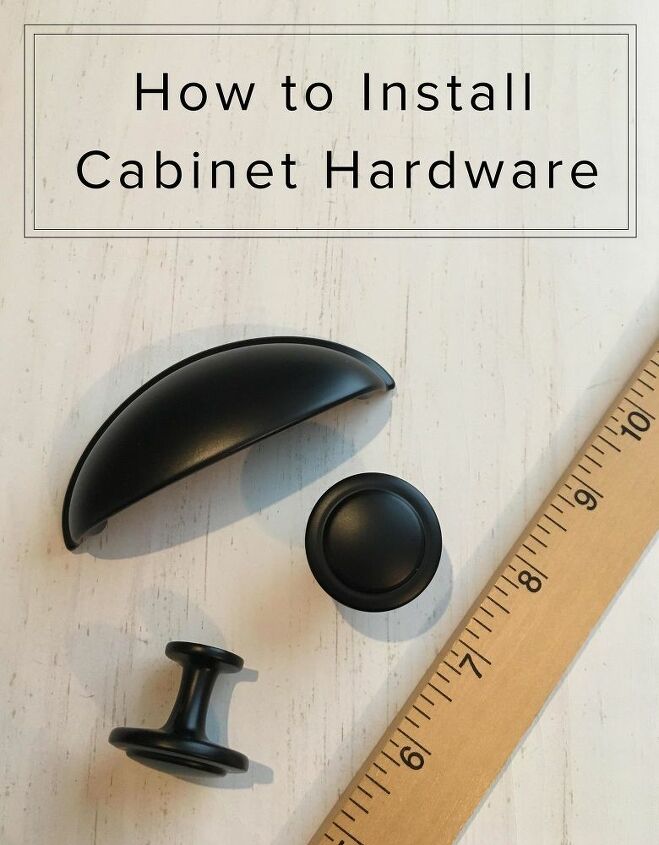












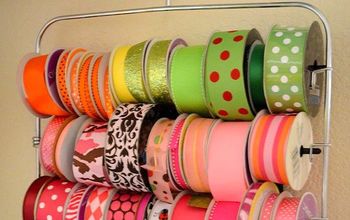
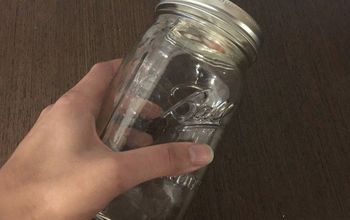




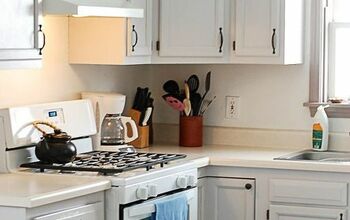

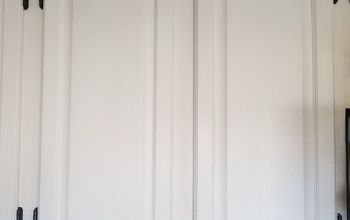


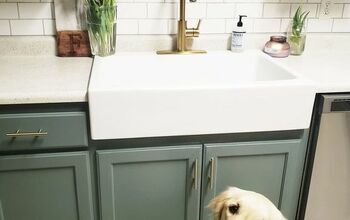




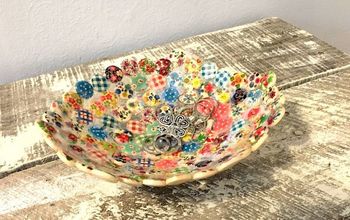


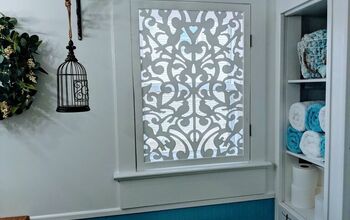



Frequently asked questions
Have a question about this project?
Where you have handles to put your fingers in to open, do they make a plastic guard to go against cabinet ,length of handle to protect against grease, dirt and water,so you don,t rub stain off
Since it's not in the budget to replace the counters, have you thought of painting them? It's another thing that can be played with to get the right colors or grain. Black (in granite or marble design) would look awesome and change the entire look of the kitchen! I did mine for less than $50.00. Just a thought.